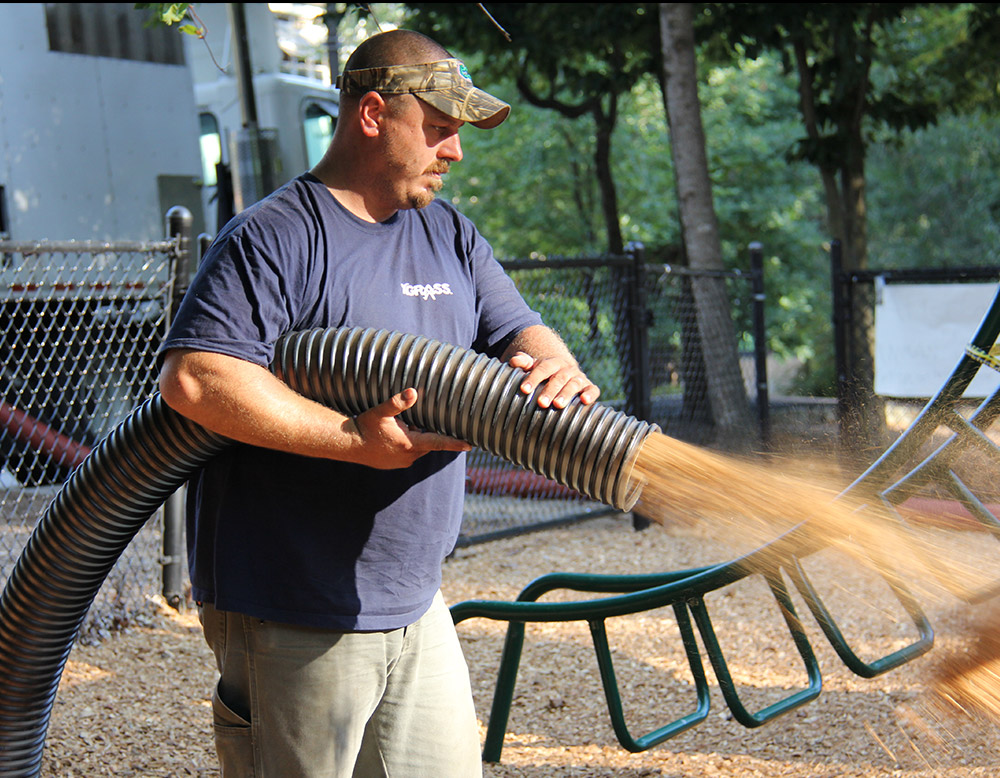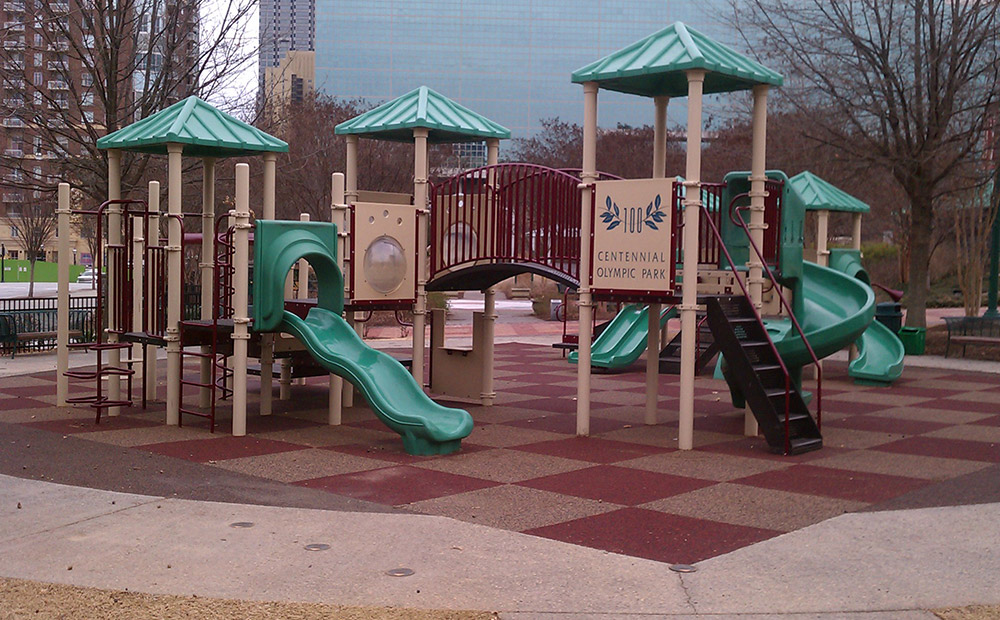Playground Surfacing Installation Cost
If you consider installation costs vs. total lifetime costs when evaluating playground surfacing options, you will quickly see that there is major trade-off involved. Loose fill surfaces like engineered wood fiber and rubber mulch are low cost materials that are easy to install but require nearly constant maintenance to stay compliant with safety standards and have to be replaced often.
Installation Cost
Winners
Looking strictly at the initial costs of installation, loose-fill surfacing materials are generally more affordable than unitary surfaces and easier to install. Of the ADA compliant materials, EWF is typically less expensive than rubber while both are installed in a similar fashion. Pea gravel, sand and most mulches are not ADA compliant so have limited use beyond home playgrounds. Once should also note that loose-fill materials need to be topped off regularly and replaced occasionally.

Installation Cost
Losers
Unitary surfacing materials tend to be superior for every evaluation criteria except for installation costs. For the most part, it is significantly more expensive to install these surfaces and it is the primary reason that more playgrounds are not outfitted with them. One key thing to consider, however, is that while these materials have a higher upfront cost, they can end up saving money over the lifetime of the playground due to their long lifespans and low maintenance requirements. See our Lifetime Cost Evaluation criteria page for more information.


